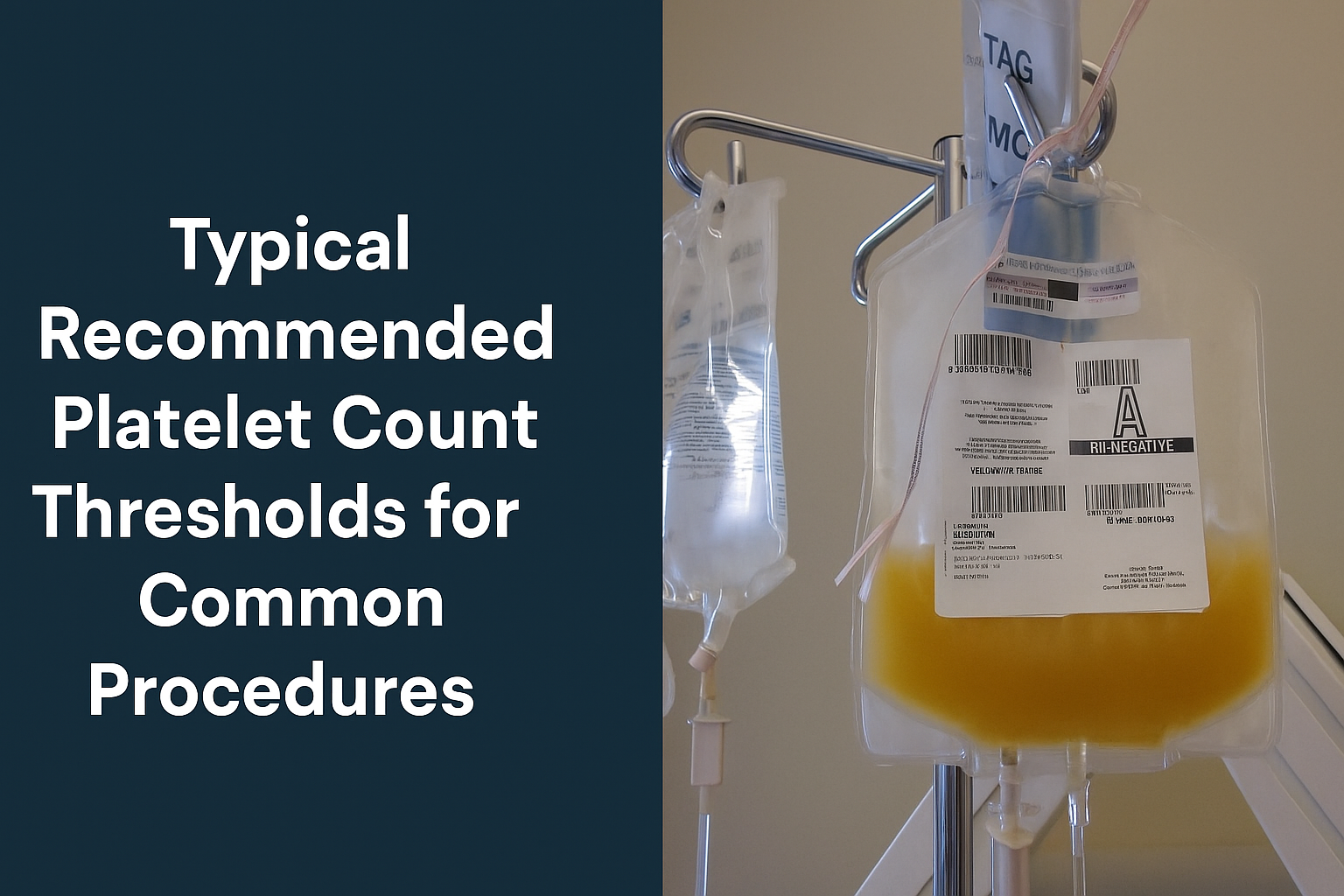
Jun 11, 2025, 08:22
Mastering the Art of Platelet Transfusion: Dr. Akhil Breaks Down the Clinical Thresholds You Need to Know
In a recent insightful post on X, Dr. Akhil delivers a concise yet powerful breakdown of platelet transfusion thresholds—a critical guide for clinicians navigating invasive procedures in patients with thrombocytopenia.
“When will you want to transfuse platelets?
Typical Recommended Platelet Count Thresholds for Common Procedures
Platelet transfusion may be considered when the patient’s platelet count is below the threshold for the corresponding procedure.
Neurosurgery or ocular surgery – <100,000/microL
Most other major surgery – <50,000/microL
Endoscopic procedures – <50,000/microL for therapeutic procedures; 20,000/microL for low risk diagnostic procedures
Bronchoscopy with bronchoalveolar lavage (BAL) – <20,000 to 30,000/microL
Central line placement – <20,000/microL
Lumbar puncture – <10,000 to 20,000/microL in patients with hematologic malignancies and <40,000 to 50,000 in patients without hematologic malignancies; lower thresholds may be used in patients with immune thrombocytopenia (ITP)
Neuraxial analgesia/anesthesia – <80,000/microL
Bone marrow aspiration/biopsy – <20,000/microL
Actively bleeding patients with thrombocytopenia should be transfused with platelets immediately to keep platelet counts >50,000/microL in most bleeding situations including disseminated intravascular coagulation (DIC), and >100,000/microL if there is central nervous system bleeding
Source : UpToDate”
Remember: Actively bleeding patients require immediate transfusion. Timely action can be lifesaving, especially in cases of CNS bleeding or DIC.”
See the full breakdown and expert commentary now on Hemostasis Today.
-
Dec 12, 2025, 23:51Don’t Miss: IACH Post ASH 2025 Roundtable Debate
-
Dec 12, 2025, 23:37C-Reactive Protein and Cardiovascular Risk in the General Population: A European Heart Journal Study by Berkan Kurt et al.
-
Dec 12, 2025, 23:23Alta Schutte and Colleagues at National Hypertension Taskforce: Driving Single-Pill Therapy for Hypertension and More
-
Dec 12, 2025, 22:27Normal Counts, High Risk: Abdul Mannan Breaks Down JAK2 + Splanchnic Vein Thrombosis
-
Dec 12, 2025, 14:478 Posts Not to Miss From the ASH 2025 – Marc Carrier
-
Dec 12, 2025, 10:27Abdul Mannan: When Blood Clots Show Up in Unexpected Places
-
Dec 12, 2025, 10:17Alyssa George on Clinical and Economic Impact of a Eptacog Beta
-
Dec 12, 2025, 09:53Ivan Budnik Awarded AHA Postdoctoral Fellowship! Aiming to Improve DVT Long-term Outcomes
-
Dec 12, 2025, 09:34Giles Platford on Baby Big: Plasma-Derived Drug Against Infant Botulism
